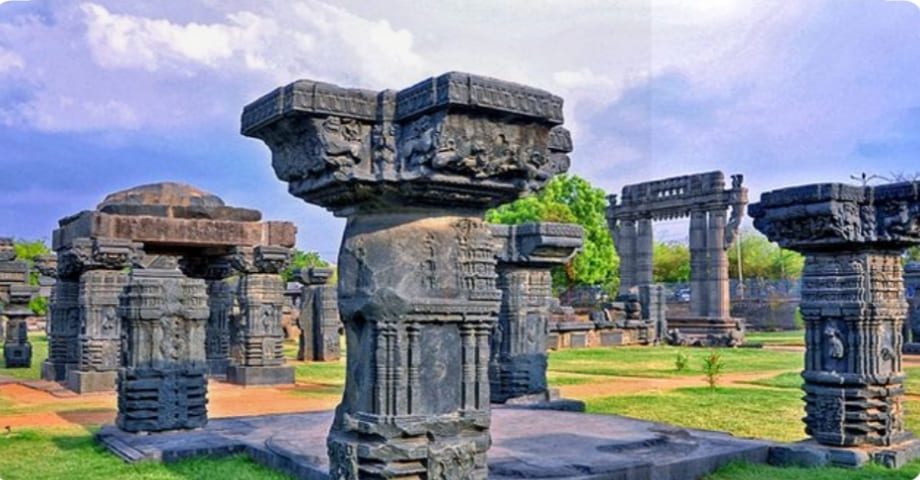Just a few kilometers from the bustling city of Jodhpur, Mandore Gardens stands as a testament to the rich history and cultural heritage of Rajasthan. This magnificent garden, once the capital of the Marwar kingdom, is now a popular tourist destination, attracting visitors with its serene beauty and architectural marvels. In this blog post, we will explore the historical significance, architectural highlights, botanical beauty, and cultural importance of Mandore Gardens, along with practical information for visitors.

1. Mandore Gardens: Historical Background
The history of Mandore Gardens dates back to the 6th century when Mandore served as the capital of the Marwar kingdom. The city was later abandoned in favor of Mehrangarh Fort in Jodhpur, but Mandore remained an important site for its historical and architectural treasures. The gardens are home to several cenotaphs (chhatris) of Marwar rulers, reflecting the grandeur of the bygone era. Notably, the cenotaph of Maharaja Ajit Singh, built in 1793, is a striking example of the architectural brilliance of that time.
2.Mandore Gardens: Architectural Highlights
Mandore Gardens is renowned for its stunning architectural features. The cenotaphs of Marwar rulers, made of red sandstone, are the primary attractions. These chhatris are intricately carved and adorned with beautiful sculptures, showcasing the artistic prowess of Rajasthani craftsmen. Among the most notable structures are the cenotaphs of Maharaja Jaswant Singh and Maharaja Ajit Singh.
Another significant feature is the Hall of Heroes, which honors various deities and Rajput heroes. This hall houses 16 figures carved out of a single rock, each depicting a hero from the local folklore. Additionally, the Temple of 33 Crore Gods is a unique structure dedicated to the Hindu pantheon, boasting intricate carvings and statues.

3. Mandore Gardens:Botanical Beauty
Apart from its architectural splendor, Mandore Gardens is also known for its lush greenery and well-maintained gardens. The garden’s layout is designed to offer a peaceful retreat, with numerous trees, plants, and flowers creating a vibrant and tranquil environment. The gardens are particularly beautiful during the monsoon and winter seasons when the flora is in full bloom.
Visitors can stroll through the manicured lawns, relax under the shade of ancient trees, and enjoy the serene ambiance. The garden’s ponds and water features add to its charm, making it a perfect spot for nature lovers and photographers.
4. Cultural Significance
Mandore Gardens holds a special place in Rajasthani culture and folklore. It is not just a historical site but also a cultural hub where various festivals and events are celebrated. The gardens come alive during festivals like Gangaur and Teej, attracting locals and tourists alike. These festivals showcase traditional music, dance, and rituals, providing a glimpse into the vibrant culture of Rajasthan.
The Hall of Heroes and the Temple of 33 Crore Gods reflect the deep-rooted religious and cultural beliefs of the region. These structures serve as a reminder of the rich mythology and heroic tales that are an integral part of Rajasthani heritage.
5. Visitor Information
Mandore Gardens is open to visitors every day from sunrise to sunset. The entry is free, making it an accessible attraction for all. The gardens are well-equipped with basic facilities such as restrooms and parking areas. Guides are available for those interested in learning more about the historical and cultural significance of the site.
For those planning an extended visit, there are several nearby attractions worth exploring. Mehrangarh Fort, Umaid Bhawan Palace, and Jaswant Thada are all within a short drive from Mandore Gardens, offering a comprehensive tour of Jodhpur’s historical landmarks.

6. Conservation Efforts
Preserving the heritage and beauty of Mandore Gardens is a continuous effort. The Archaeological Survey of India (ASI) and local authorities have undertaken several restoration projects to maintain the site. These efforts aim to protect the historical structures and ensure the gardens remain a serene and welcoming place for visitors.
Visitors can contribute to conservation efforts by respecting the site’s rules and regulations, avoiding littering, and supporting local initiatives aimed at preserving Mandore Gardens.
7. Personal Experience
A visit to Mandore Gardens is a journey through history and nature. The tranquil environment, combined with the grandeur of the cenotaphs and temples, makes for an unforgettable experience. Visitors often share their awe at the intricate carvings and the peaceful ambiance of the gardens. For photography enthusiasts, the gardens offer numerous picturesque spots, especially during the golden hours of sunrise and sunset.
First-time visitors are advised to wear comfortable shoes, carry water, and allocate sufficient time to explore the various attractions within the gardens. A guided tour can enhance the experience by providing deeper insights into the historical and cultural significance of the site.
Conclusion:
Mandore Gardens is more than just a historical site; it is a celebration of Rajasthan’s rich heritage and natural beauty. From its majestic cenotaphs to its lush gardens, Mandore Gardens offers a unique blend of history, culture, and tranquility. Whether you are a history buff, a nature lover, or a cultural enthusiast, a visit to Mandore Gardens is sure to leave you mesmerized.
FAQs:
1 Q: What are the visiting hours of Mandore Gardens?
A: Mandore Gardens is open from sunrise to sunset every day.
2.Q: Is there an entry fee for Mandore Gardens?
A: No, entry to Mandore Gardens is free for all visitors.
3.Q: What is the best time to visit Mandore Gardens?
A: The best time to visit is during the monsoon and winter seasons when the gardens are at their most beautiful.
4.Why is Mandore Garden famous?
5.How much time required for mandore garden?
6.Is Mandore Garden worth visiting?
7.How to reach Mandore Garden Jodhpur?
8.Mandore, Jodhpur
9.Mandore Garden photos
10.Mandore Garden light show Ticket price
11.Mandore Garden entry fee
12.Mandore garden direction
13.Mandore Garden history

